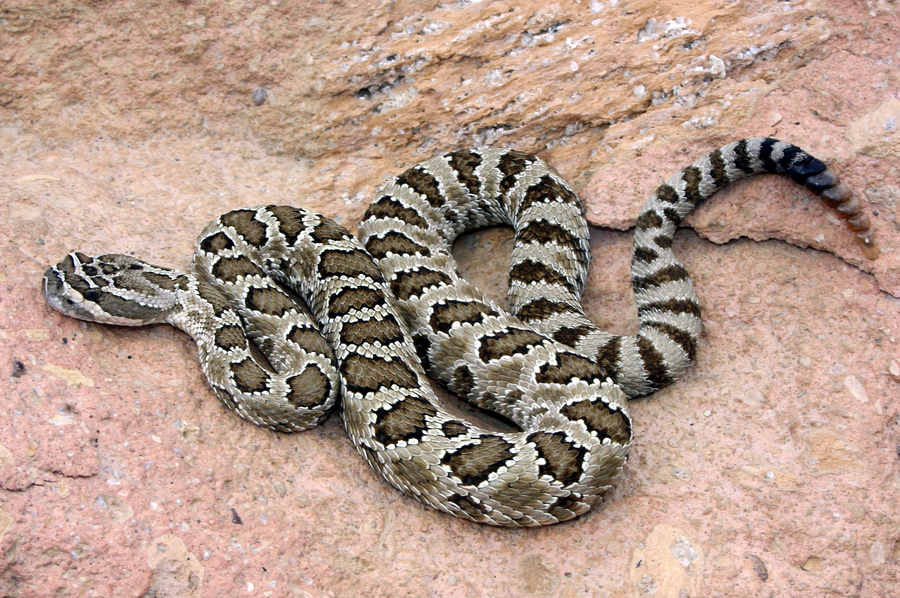
Rattlesnakes are the only venomous snake native to California.
FAMILY
Viperidae, a family of over 200 venomous snake species
RANGE
The western U.S., Baja Mexico, and parts of southwestern Canada
Important Environmental Factors

Low to moderate variation in seasonal rainfall

Low levels of paved or compacted ground

Below ~2,000 meters (but may be found at higher elevations)
Appearance
Rattlesnakes can be identified by their distinctively triangular-shaped head, as well as the rattle at the end of their tail. The rattle is made out of interlocked segments of old skin. Young rattlesnakes have a small rattle called a button. However, the presence or absence of a rattle is not always a reliable way to identify a rattlesnake, as pieces or the entire rattle can break off. Adults may reach up to 6 feet in length, but their size varies.
Habitat and Behavior
The western rattlesnake is the most widespread rattlesnake in California and inhabits both rural and urban areas. They can be found in a range of habitats from the coast to the desert, but avoid extremely arid environments. When foraging, they use their tongues and pits (temperature-sensitive structures on the sides of their head) to detect prey [1]. Once prey is near, they strike, then inject and subdue the animal with venom from their fangs. Adult rattlesnakes prey mostly on live rodents, while younger snakes often eat lizards and smaller, young rodents.
Wildlife Encounters
Rattlesnakes are sometimes hunted due to a negative public perception, despite the low risk of actually being bitten. Western rattlesnakes are not aggressive animals. Their rattle is a warning – if they are not startled, approached, or provoked, they will likely retreat [2]. To avoid encounters with rattlesnakes, always be alert when in potential rattlesnake habitat. Do not hike alone. Stay on designated trails and avoid the tall grass and brush that snakes often hide in during the day.
For more tips on rattlesnake encounters, visit the California Department of Fish and Wildlife page.
Data source:
Species records provided by iNaturalist
References:
- UC IPM, “Rattlesnakes“
- California Dept of Fish and Wildlife, “Rattlesnakes in California“